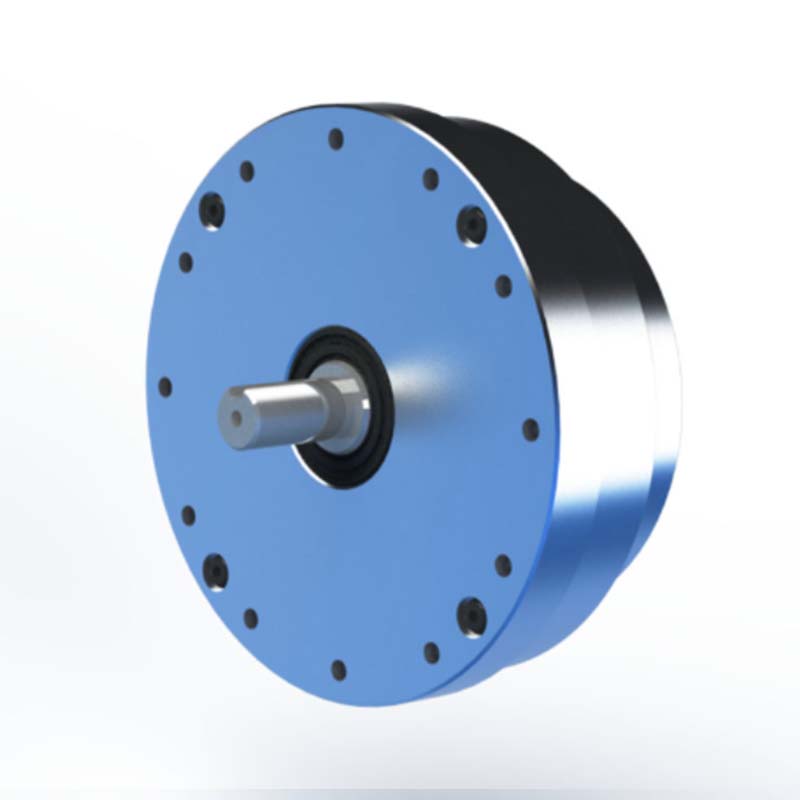What is a harmonic actuator?
What is a harmonic actuator
harmonic actuator
In the rapid development of modern industry and robotics, harmonic actuators have gradually become one of the key components. Its unique design and performance make it play an important role in the field of precision control and high efficiency. So, what is a harmonic actuator?

Basic principle of harmonic actuator
Harmonic actuator, also known as harmonic reducer, is a mechanical device that achieves high precision and high reduction ratio through flexible gear transmission. It consists of three main parts: wave generator, flexible wheel and rigid wheel. The wave generator is usually an elliptical cam installed in the flexible wheel, which produces periodic elastic deformation through rotation. The flexible wheel meshes with the rigid wheel to achieve torque transmission and deceleration effect.
High precision and high reduction ratio
The biggest advantage of harmonic actuators lies in their excellent precision and high reduction ratio. Due to the elastic deformation of the flexible wheel, it can achieve multi-tooth contact with the rigid wheel, which greatly reduces the transmission error and backlash. Common harmonic actuators can achieve a reduction ratio of 100:1 or even higher, and the transmission efficiency can reach more than 90%. This high precision and high efficiency make it extremely advantageous in applications that require precise positioning and control.
Wide range of applications
The application range of harmonic drives is very wide, covering a variety of fields from industrial robots to aerospace. In industrial robots, harmonic drives are used to drive the joints of the robotic arm, providing high-precision position control and stable operating performance. In medical equipment, harmonic drives are used in surgical robots to help achieve precise operations in minimally invasive surgery. In addition, harmonic drives also have important applications in aerospace, semiconductor manufacturing, optical equipment, and electric vehicles.
Environmental protection and economic benefits
Harmonic drives not only perform well in technical performance, but also have significant environmental and economic benefits. Due to their high efficiency and low hysteresis, harmonic drives can reduce energy consumption and improve the overall operating efficiency of equipment. At the same time, their compact design and long life reduce maintenance costs and downtime, and improve the economy of equipment.
In the future, with the continuous advancement of science and technology and the increase in application needs, the technology of harmonic drives is also developing. Future harmonic drives will pay more attention to miniaturization, lightweight and high load-bearing capacity to adapt to more complex and diverse application scenarios. In addition, the development of intelligence and digitalization will also promote the deep integration of harmonic drives and control systems to achieve a higher level of automation and intelligence.
In summary, as a high-precision and high-efficiency mechanical transmission device, harmonic drives play an irreplaceable role in modern industry and robotics. With the continuous advancement of technology and the expansion of application fields, harmonic drives will surely play a more important role in the future development of intelligent manufacturing and automation.
 English
English Español
Español Português
Português русский
русский français
français 日本語
日本語 Deutsch
Deutsch Tiếng Việt
Tiếng Việt Italiano
Italiano Nederlands
Nederlands ไทย
ไทย Polski
Polski 한국어
한국어 Svenska
Svenska magyar
magyar Malay
Malay বাংলা
বাংলা Dansk
Dansk Suomi
Suomi हिन्दी
हिन्दी Pilipino
Pilipino Türk
Türk Gaeilge
Gaeilge عربى
عربى Indonesia
Indonesia norsk
norsk اردو
اردو čeština
čeština Ελληνικά
Ελληνικά Українська
Українська Javanese
Javanese فارسی
فارسی தமிழ்
தமிழ் తెలుగు
తెలుగు नेपाली
नेपाली Burmese
Burmese български
български ລາວ
ລາວ Latine
Latine Қазақ
Қазақ Euskal
Euskal Azərbaycan
Azərbaycan slovenský
slovenský Македонски
Македонски Lietuvos
Lietuvos Eesti Keel
Eesti Keel Română
Română Slovenski
Slovenski मराठी
मराठी Српски
Српски
Harmonic Gearbox On-site Assembly Guide
Use a dedicated guide sleeve to assist insertion. Maintain axial pressure ≤50N during rotational installation.
Read MoreInnovative Practices in Driving the C-Axis of EDM Machines with Harmonic Reducers and Panasonic Motors
In the field of precision machining, the C-axis (rotating axis) technology of EDM machines directly impacts the machining accuracy and surface quality of complex curved parts. In recent years, the combination of harmonic reducers and Panasonic servo motors, with their high precision, high rigidity, and dynamic response, has become an innovative solution for high-end EDM machine C-axis systems.
Read MoreInnovative Applications of HarmonicDrive Actuators in Semiconductor Equipment
As semiconductor process technology evolves towards sub-5nm, equipment places higher demands on the accuracy, reliability, and space utilization of motion control systems. HarmonicDrive, with its integrated harmonic reduction technology and servo motor design, has become a core drive solution for key processes such as CMP (Chemical Mechanical Polishing), wafer transport, and photolithography equipment.
Read More